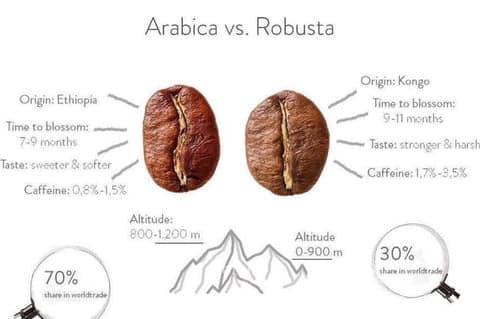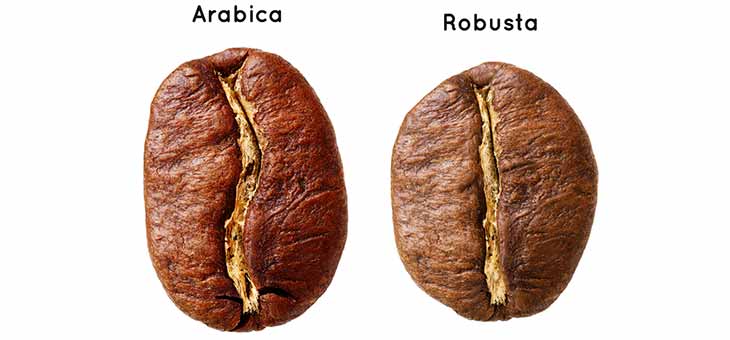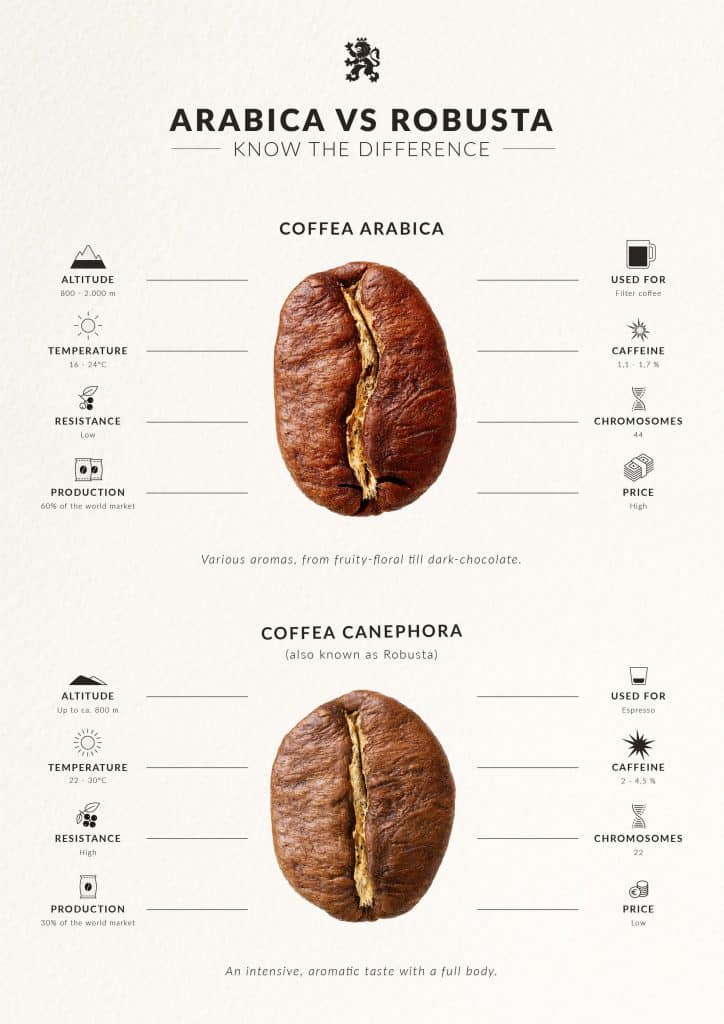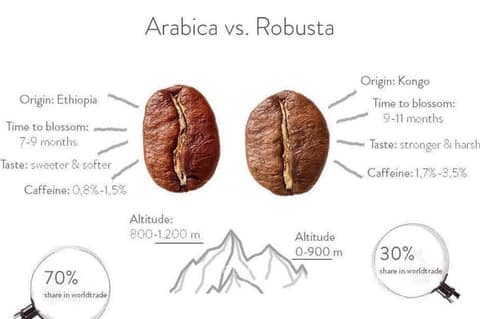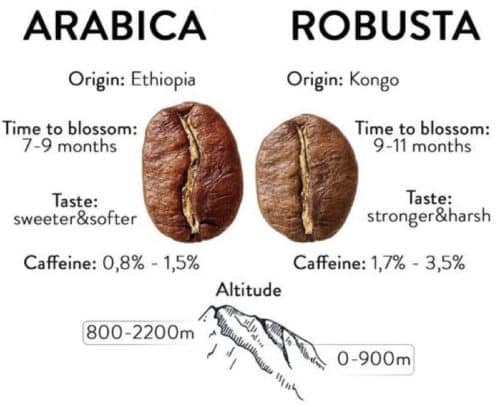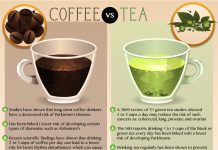Coffee lovers may have come across the terms “arabica” and “robusta” while browsing through café menus or grocery store shelves. But what exactly sets these two types of coffee beans apart? In this article, we will explore the distinct characteristics and qualities of arabica and robusta coffee beans, and how they contribute to the flavors and aromas of our favorite caffeinated beverage. Whether you prefer a smooth and delicate cup of arabica or a bold and robust robusta, join us on this journey to discover the fascinating world of coffee beans.
Appearance and Size
Arabica Coffee Beans
Arabica coffee beans are known for their smooth, rounded shape. They are slightly elongated and have a distinctive S-shape groove on one side. The beans have a light to medium brown color and a smooth surface. When roasted, they produce a rich and deep brown color, indicating a perfectly roasted bean. The size of Arabica beans is relatively larger compared to Robusta beans, with an average size of about 10 millimeters.
Robusta Coffee Beans
In contrast to Arabica beans, Robusta coffee beans are smaller and more circular in shape. They have a straighter, less pronounced groove on one side. The color of Robusta beans is darker, ranging from light to dark brown. When roasted, they produce a reddish-brown color. The size of Robusta beans is generally smaller, averaging around 7-8 millimeters.
Cultivation
Arabica Coffee Beans
Arabica coffee beans are considered to be more delicate and are grown at higher altitudes. They require specific conditions to thrive, including a consistent temperature range of 60-70°F (15-24°C) and well-drained soil. Arabica plants also need shaded areas to protect them from direct sunlight. Cultivating Arabica beans requires careful attention to detail and specific farming practices to ensure their optimal growth.
Robusta Coffee Beans
Robusta coffee beans, on the other hand, are hardier and easier to cultivate. They are grown at lower altitudes, requiring a minimum temperature of 75°F (24°C). Robusta plants can withstand more challenging conditions, including direct sunlight and less fertile soil. Compared to Arabica plants, Robusta plants are more resistant to diseases and pests, making them a more viable option for robust coffee production.
Growing Conditions
Arabica Coffee Beans
Arabica coffee beans thrive in tropical high-altitude regions with rich volcanic soil. They require a consistent temperature range, deep soil with good drainage, and a significant amount of rainfall. The ideal altitude for Arabica cultivation is between 2,000 and 6,000 feet (600-1,800 meters) above sea level. These specific growing conditions contribute to the high-quality flavor and aroma of Arabica coffee.
Robusta Coffee Beans
Robusta coffee beans are primarily grown in low-altitude regions with a warmer climate. They are less demanding in terms of rainfall but still require a sufficient water supply. Robusta plants are more tolerant of direct sunlight and can be grown in areas where Arabica plants struggle. They are particularly prevalent in humid equatorial regions, such as Vietnam and Brazil. The growing conditions for Robusta contribute to its distinct flavor characteristics and higher caffeine content.
Taste Profile
Arabica Coffee Beans
Arabica coffee beans are known for their delicate and complex flavors, making up the majority of specialty coffee. They offer a wide range of flavors, including floral, fruity, chocolatey, and even wine-like undertones. Arabica coffee tends to have a smooth and balanced taste with lower acidity levels. The intricate flavors and aroma of Arabica have made it a favorite among coffee connoisseurs worldwide.
Robusta Coffee Beans
Robusta coffee beans offer a bolder and more robust flavor profile. They are characterized by a stronger, more bitter taste with nutty, woody, and earthy notes. Robusta beans have a higher acidity level and can sometimes exhibit a rubbery or burnt flavor when not properly roasted. Although Robusta is often associated with lower-quality coffee, it plays a significant role in espresso blends, providing crema and an extra kick of caffeine.
Caffeine Content
Arabica Coffee Beans
Arabica coffee beans generally have a lower caffeine content compared to Robusta beans. On average, Arabica contains about 1.2% caffeine. However, the caffeine content can vary depending on factors such as the coffee’s origin, growing conditions, and roasting method. The lower caffeine content in Arabica beans contributes to their smoother and less jittery effect on the body.
Robusta Coffee Beans
Robusta coffee beans are known for their higher caffeine content, averaging around 2.2%. The increased caffeine concentration in Robusta beans is a natural defense mechanism against pests and diseases. This higher caffeine content gives Robusta coffee a more energizing effect, making it a popular choice for those seeking a strong and powerful cup of coffee.
Pricing
Arabica Coffee Beans
Arabica coffee is generally priced at a premium compared to Robusta due to its higher quality and demand. The unique flavor profiles and delicacy of Arabica coffee make it a sought-after commodity in the global market. Factors such as growing conditions, origin, and the presence of certifications like Fair Trade can also influence the pricing of Arabica beans.
Robusta Coffee Beans
Robusta coffee beans are typically priced lower than Arabica due to their higher availability and lower demand for their flavor characteristics. Robusta is often used in commercial blends, instant coffee, and as a filler in lower-quality coffee products. The pricing of Robusta beans is influenced by factors such as market demand, production volume, and overall quality.
Acidity Level
Arabica Coffee Beans
Arabica coffee is known for its relatively low acidity levels compared to Robusta. The acidity in Arabica beans tends to be smoother and more balanced, contributing to the coffee’s overall flavor profile. The lower acidity makes Arabica coffee less likely to cause stomach discomfort and acidity-related issues.
Robusta Coffee Beans
Robusta coffee has a higher acidity level compared to Arabica. The increased acidity in Robusta beans gives them a sharper and more intense flavor. However, this higher acidity can sometimes cause digestive issues and discomfort for individuals with sensitive stomachs.
Growing Regions
Arabica Coffee Beans
Arabica coffee beans are native to the high-altitude regions of Ethiopia. Today, they are grown in various parts of the world, including Central and South America, Africa, and some Asian countries. Each region produces Arabica coffee with distinct flavor profiles influenced by factors such as soil composition, altitude, and climate.
Robusta Coffee Beans
Robusta coffee beans are primarily cultivated in countries with tropical climates, such as Brazil, Vietnam, and Indonesia. Brazil is the largest producer of Robusta coffee globally. The Robusta growing regions contribute to the coffee’s unique taste, influenced by factors like temperature, humidity, and soil conditions.
Harvesting
Arabica Coffee Beans
Arabica coffee beans are typically hand-picked, ensuring only the ripest cherries are selected. This selective harvesting method requires careful inspection and manual labor, making it more time-consuming and expensive. However, this meticulous process results in higher-quality beans with more consistent flavors.
Robusta Coffee Beans
Robusta coffee beans are often harvested by mechanical means, using machines to strip the cherries from the tree. This method allows for faster and more efficient harvesting, catering to the larger-scale production of Robusta coffee. The mechanized harvesting process can result in a mixture of ripe and unripe cherries being collected.
Uses and Blends
Arabica Coffee Beans
Arabica coffee beans are highly versatile and widely used for various brewing methods, including drip brewing, pour-over, and espresso. Their delicate flavors and balanced acidity make Arabica beans suitable for single-origin specialty coffees, as well as complex blends. Arabica is often the preferred choice for those seeking a higher-quality and nuanced coffee experience.
Robusta Coffee Beans
Robusta coffee beans are commonly used in espresso blends due to their higher caffeine content and the ability to produce a rich crema. They are also utilized in instant coffee mixes where intense flavor and a strong kick are desired. The distinct characteristics of Robusta coffee make it an essential component in achieving a full-bodied and robust cup of coffee.
In conclusion, while both Arabica and Robusta coffee beans have their unique characteristics, they differ significantly in terms of appearance, cultivation requirements, taste profiles, caffeine content, pricing, and uses. Arabica is celebrated for its delicate flavors, higher quality, and versatility, while Robusta brings boldness, higher caffeine content, and affordability to the table. Understanding the differences between these two coffee bean varieties allows us to appreciate and choose the coffee that best suits our taste preferences and brewing methods.


